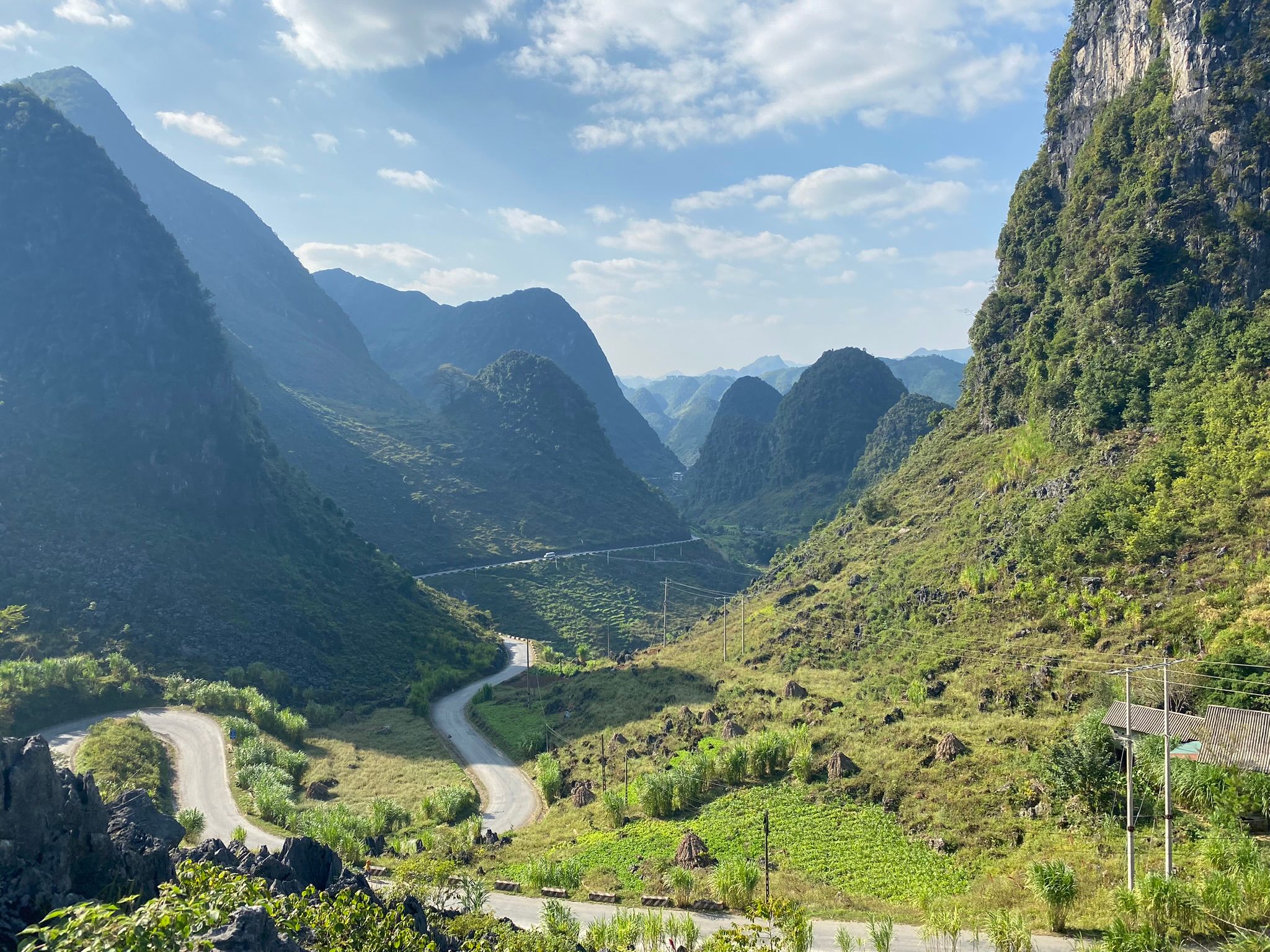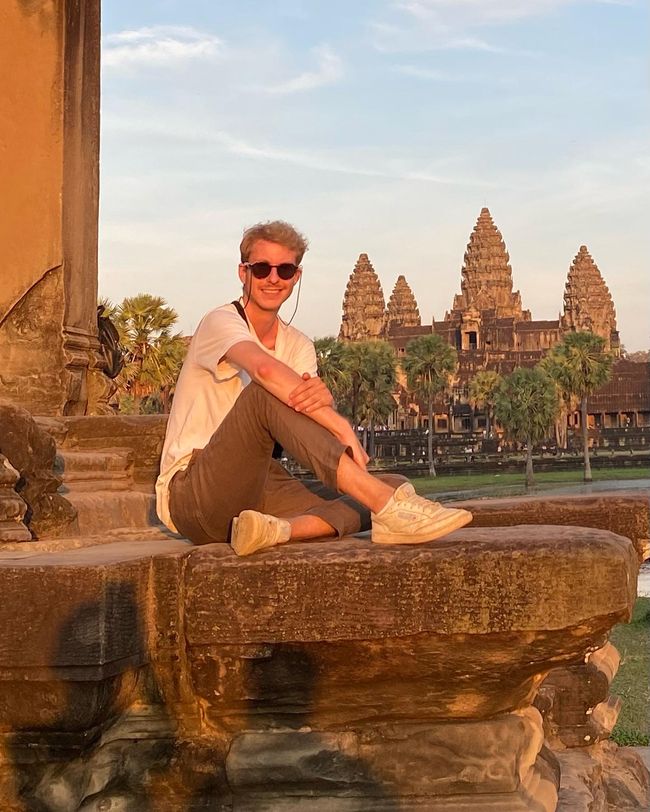04/02/2023 - The Hellfire Pass and the Erawan Waterfalls in Kanchanaburi
প্রকাশিত হয়েছে: 04.02.2023
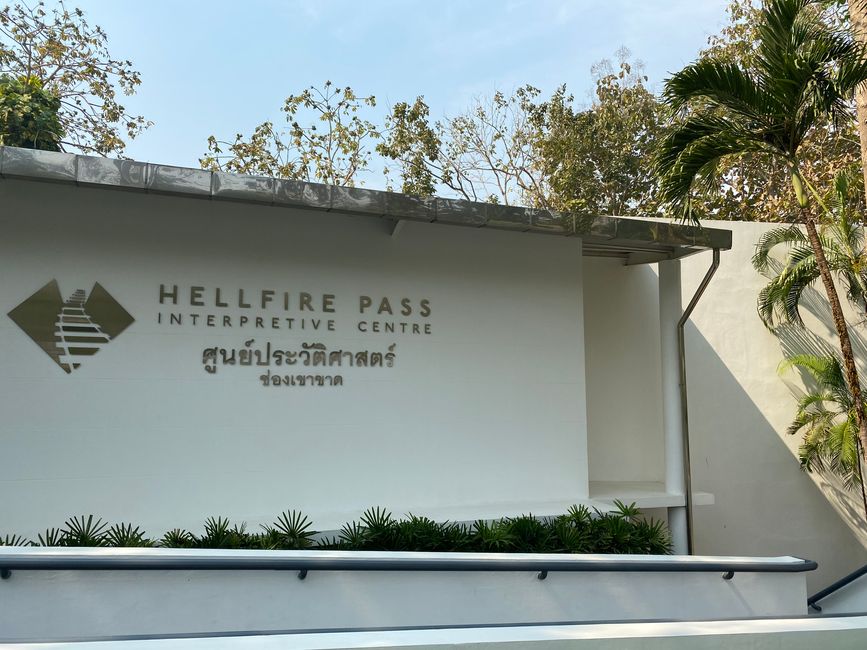
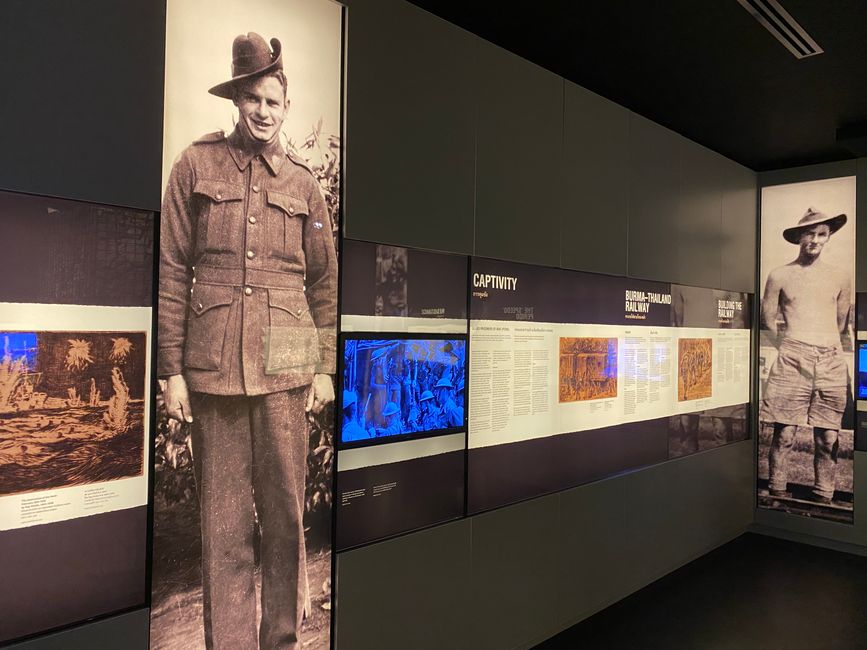
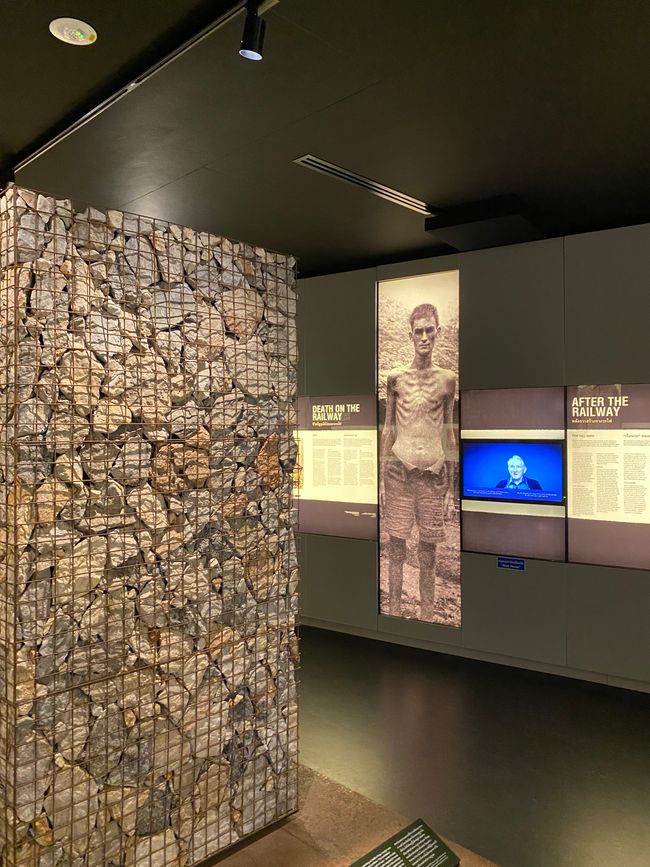
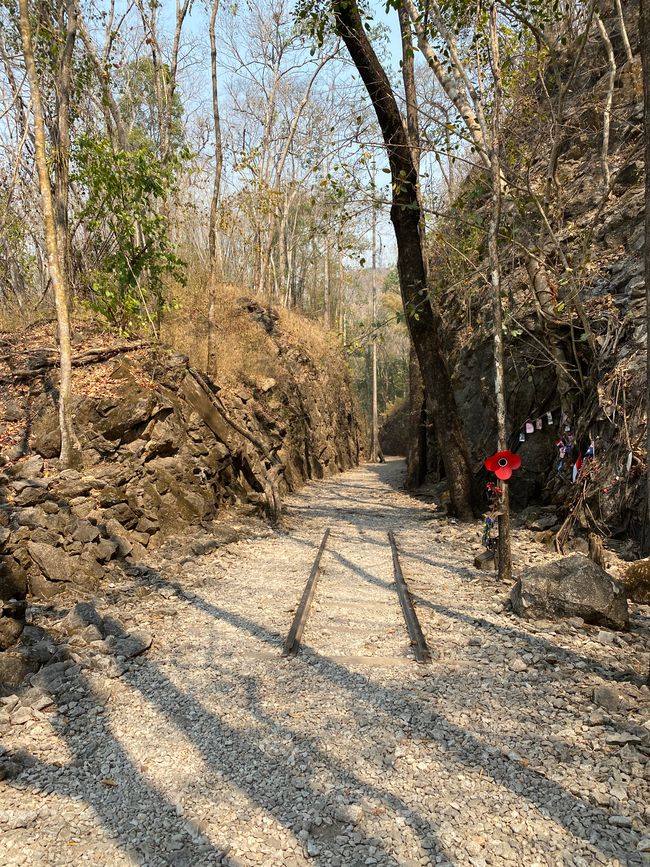
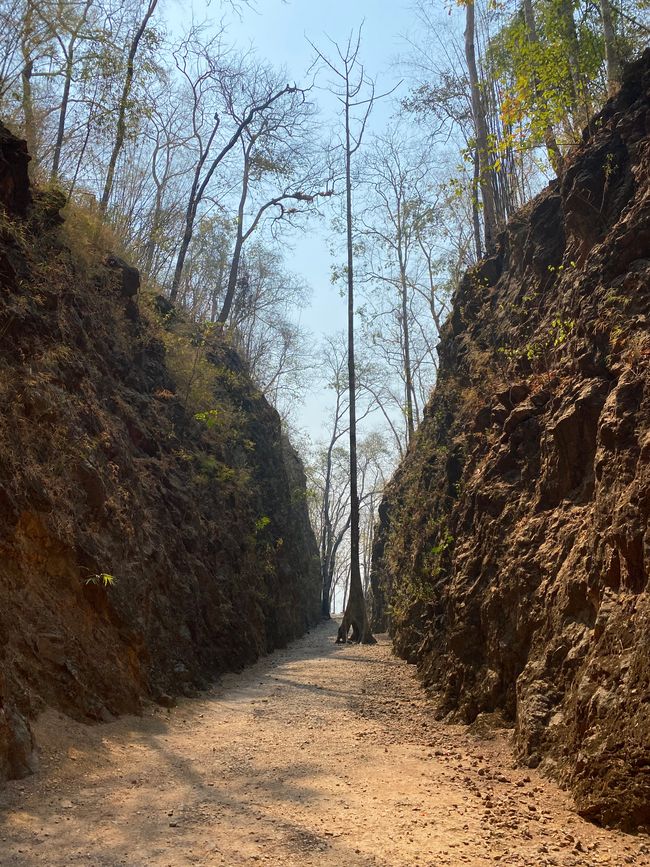
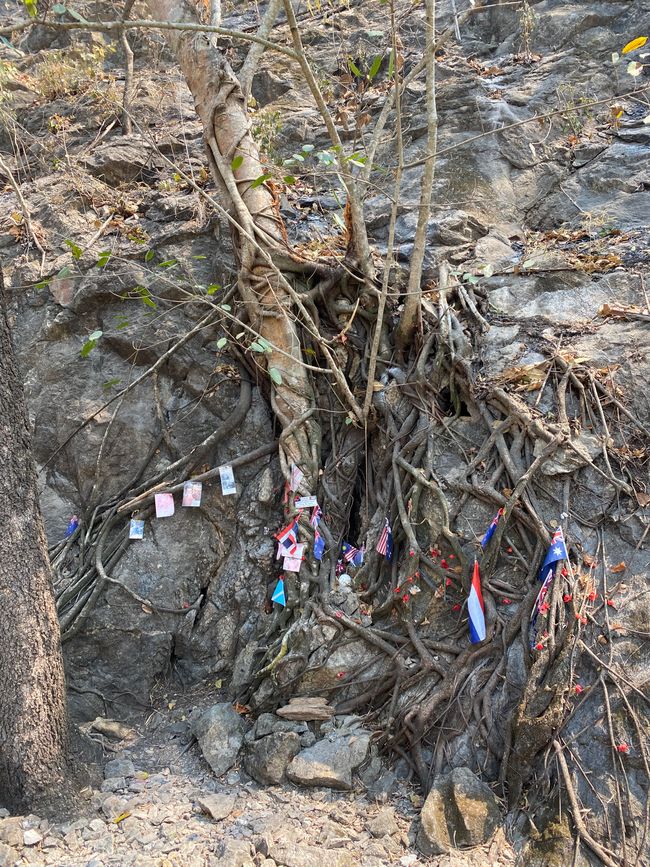
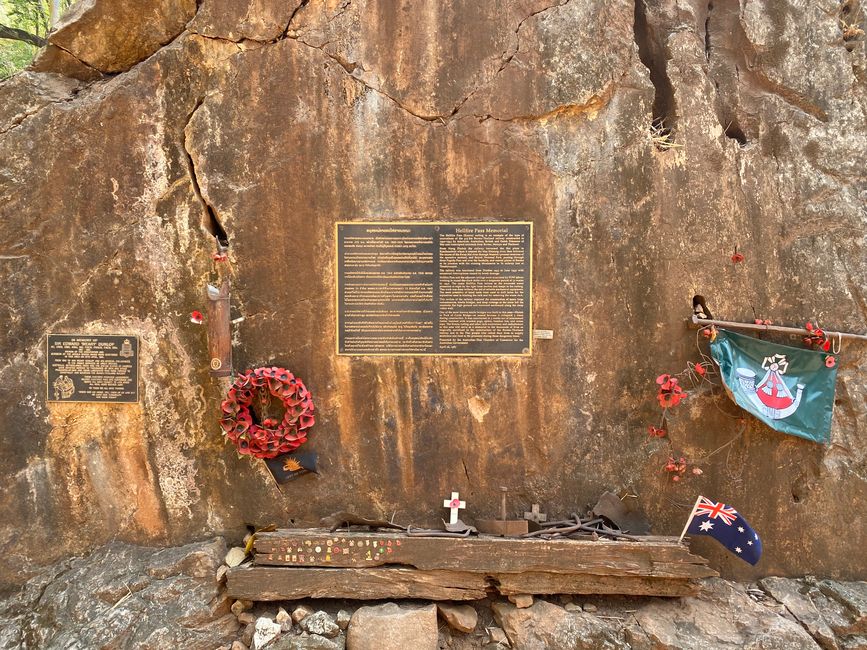
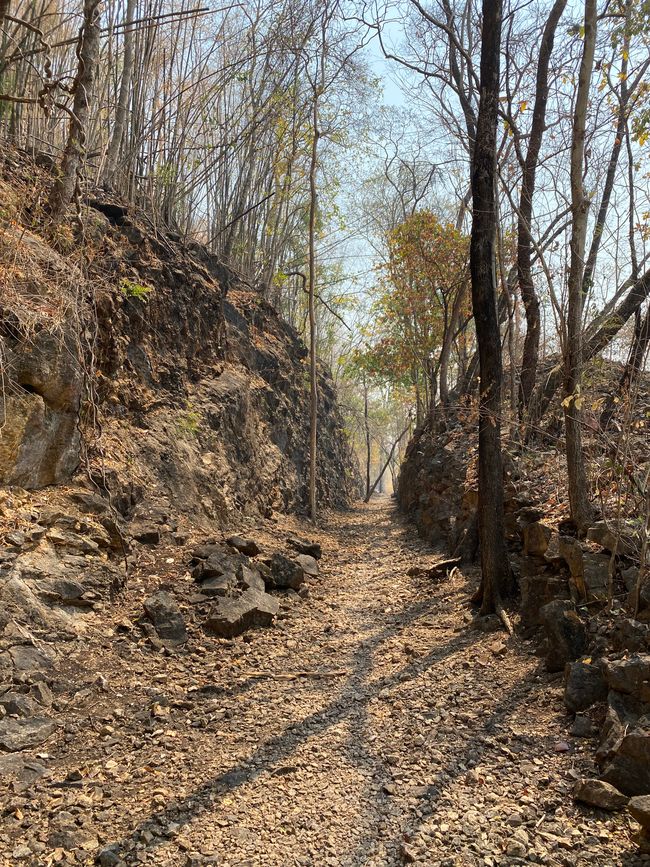
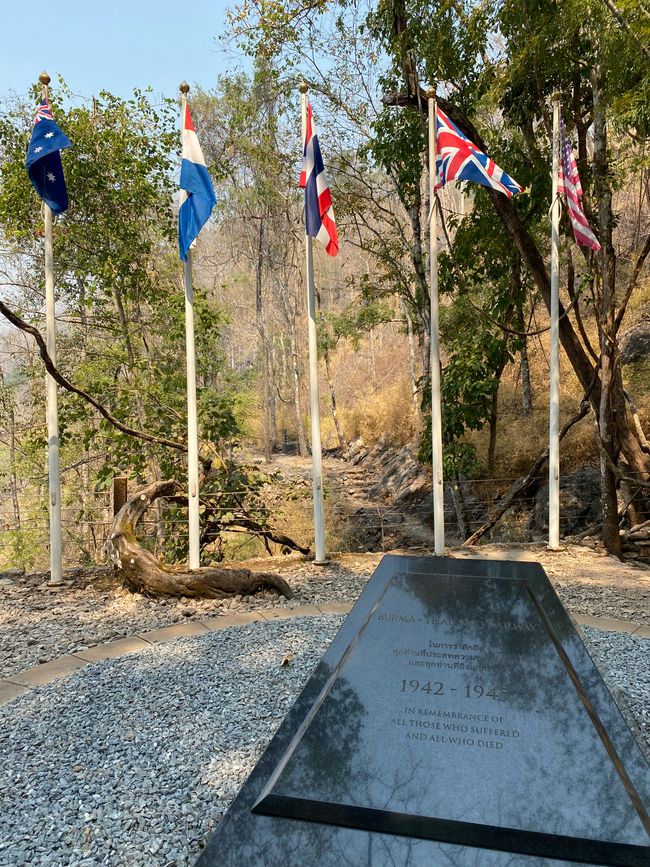
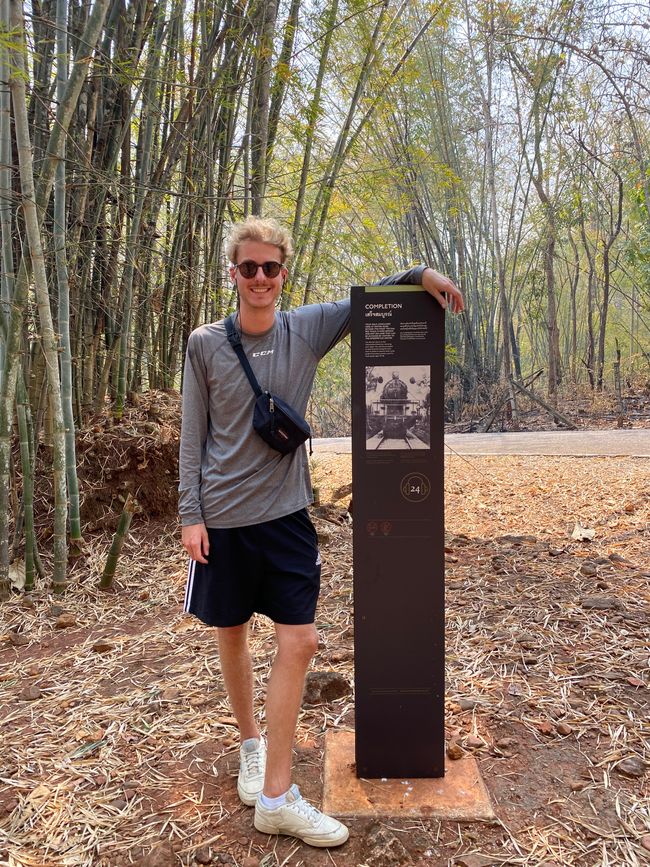
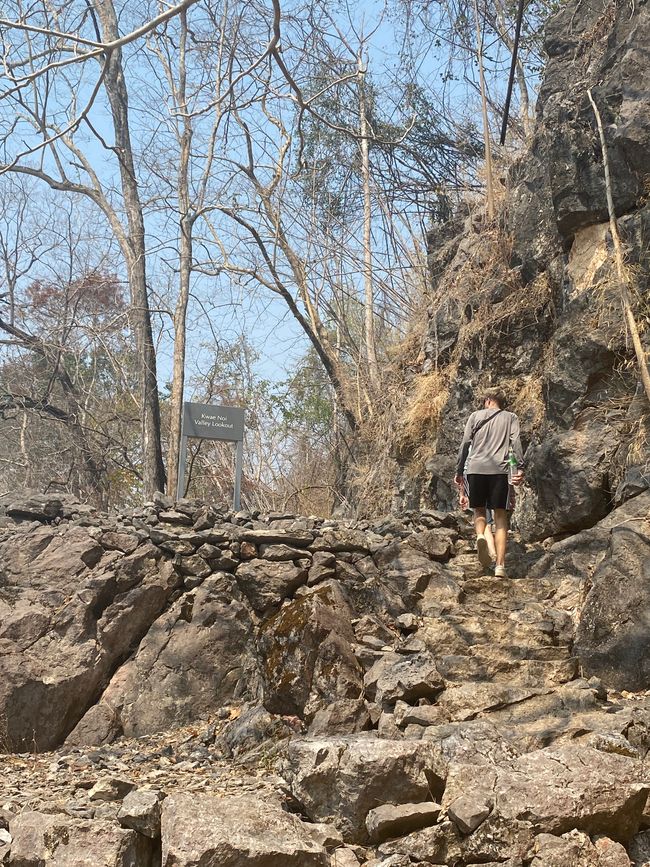
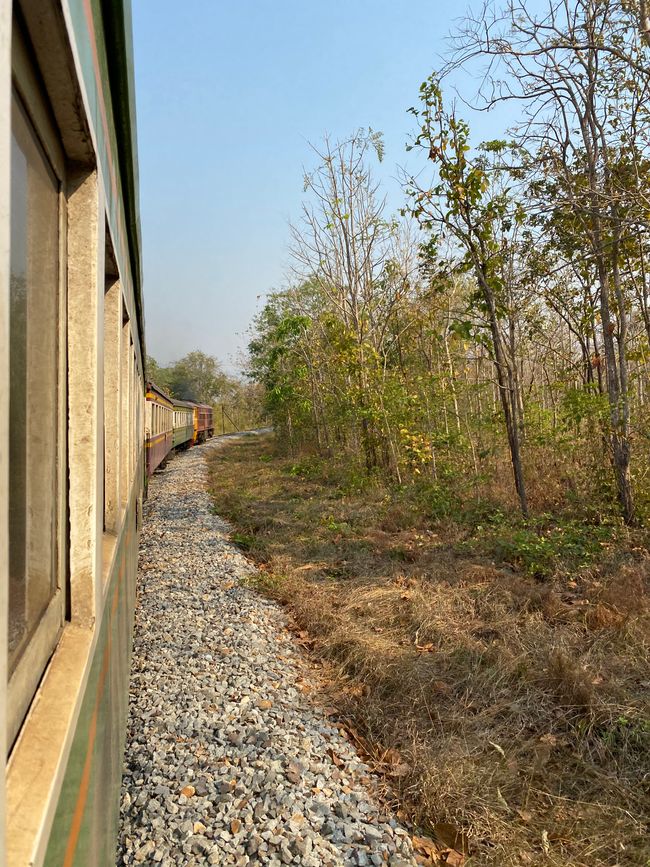
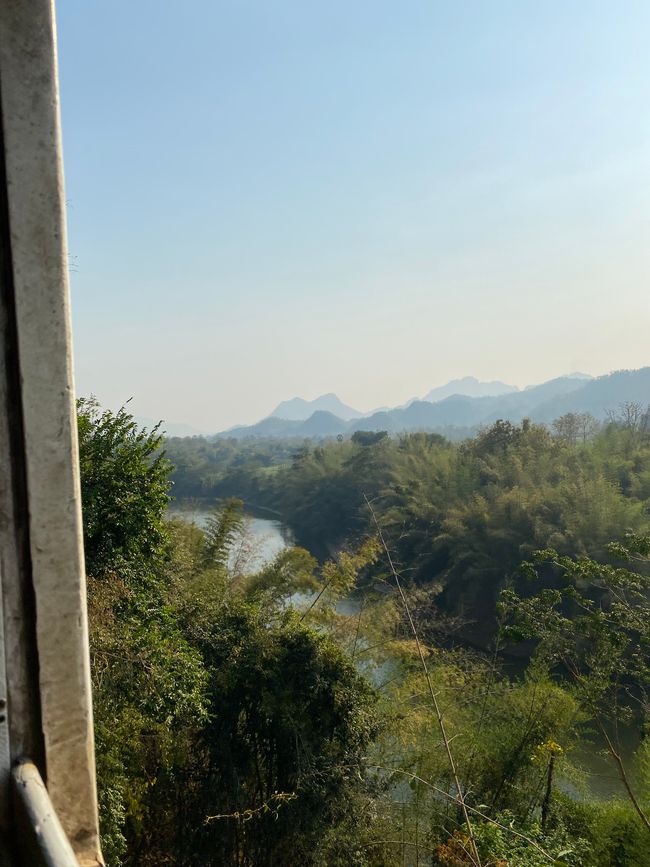
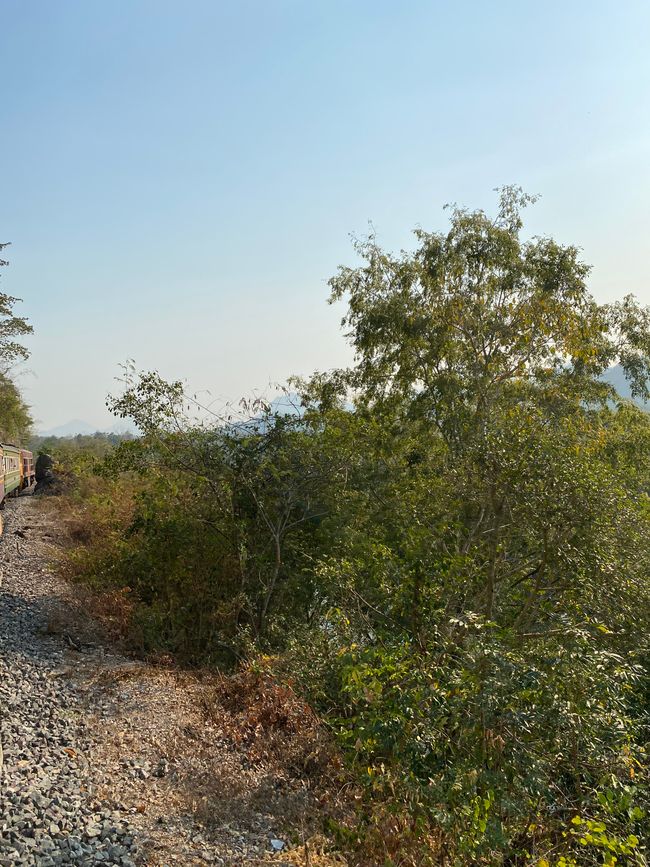
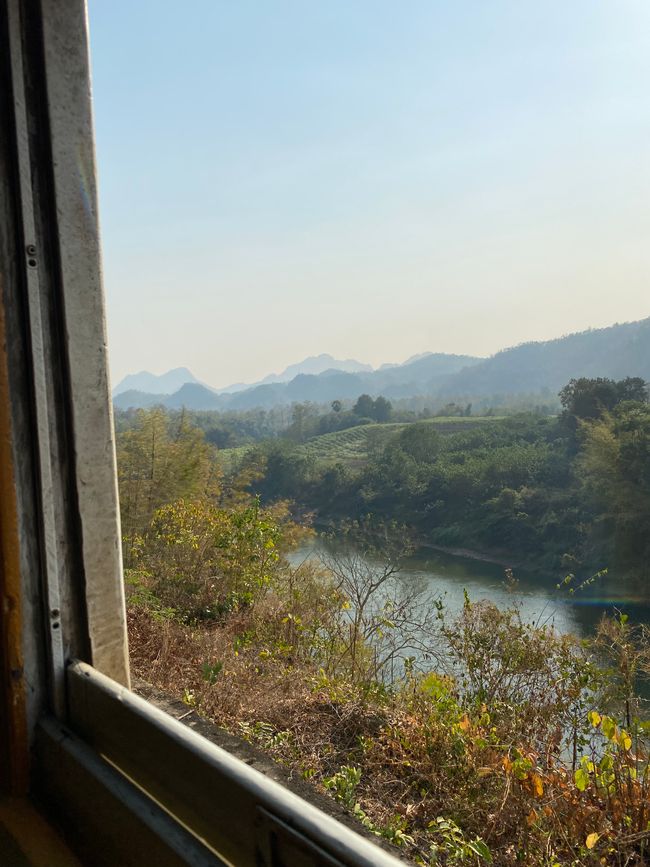
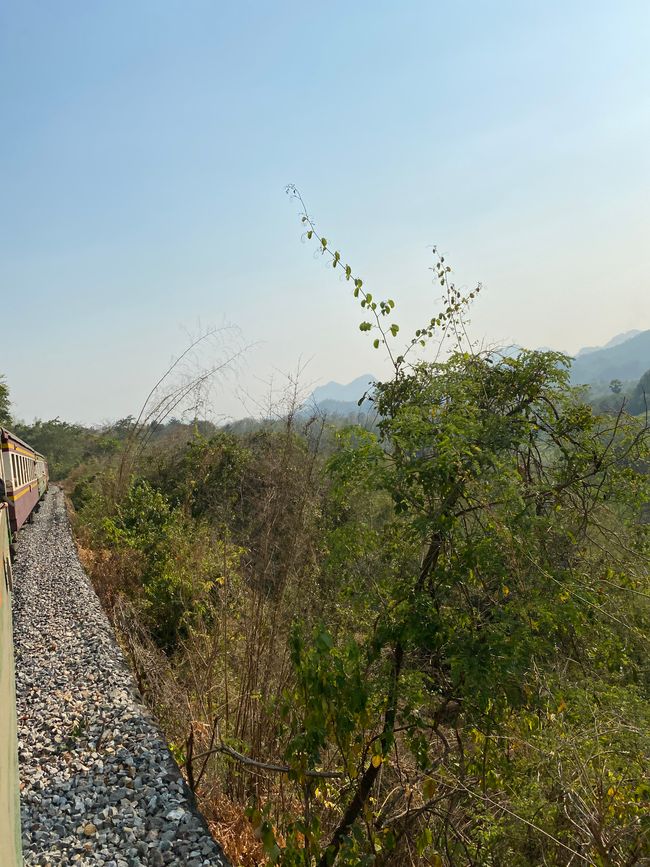
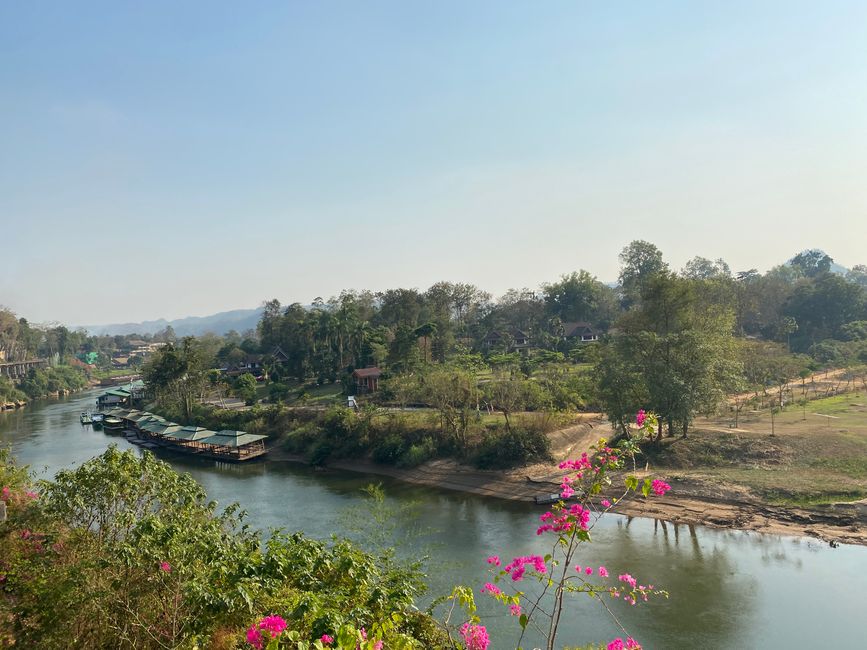
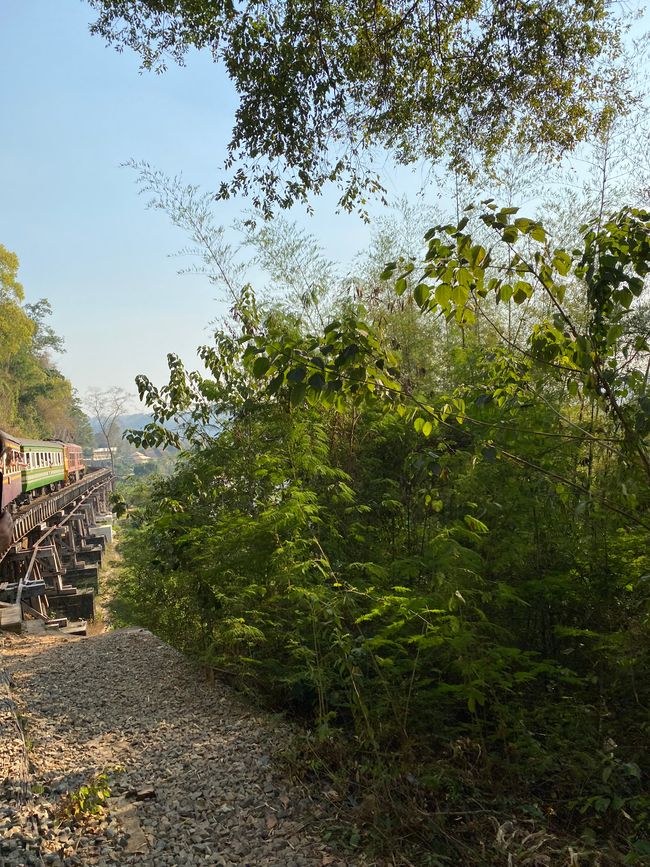
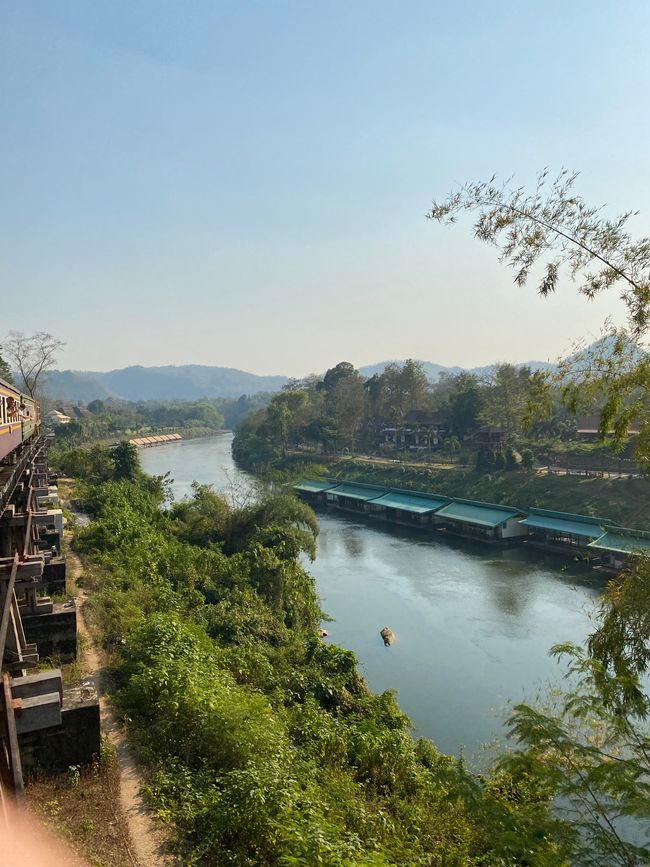
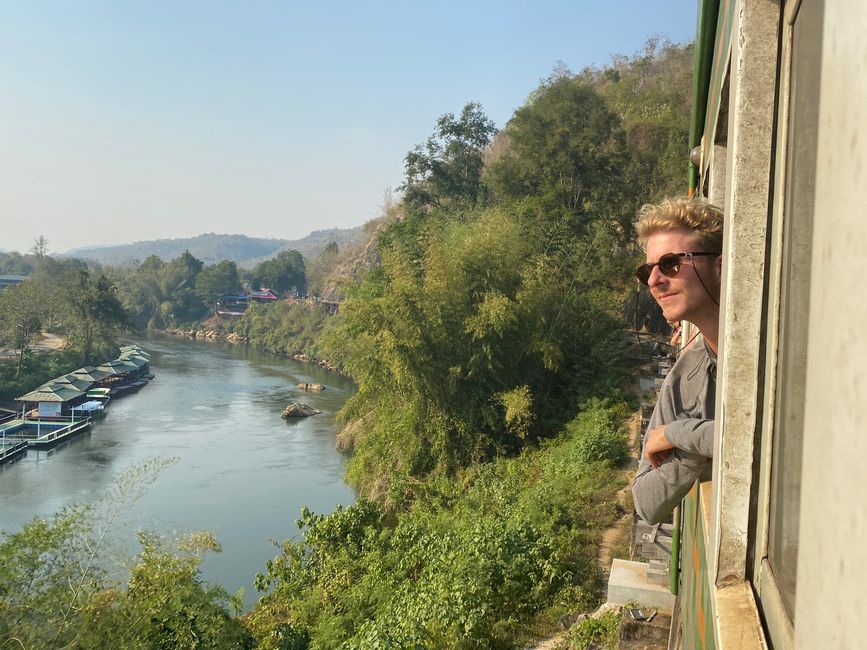
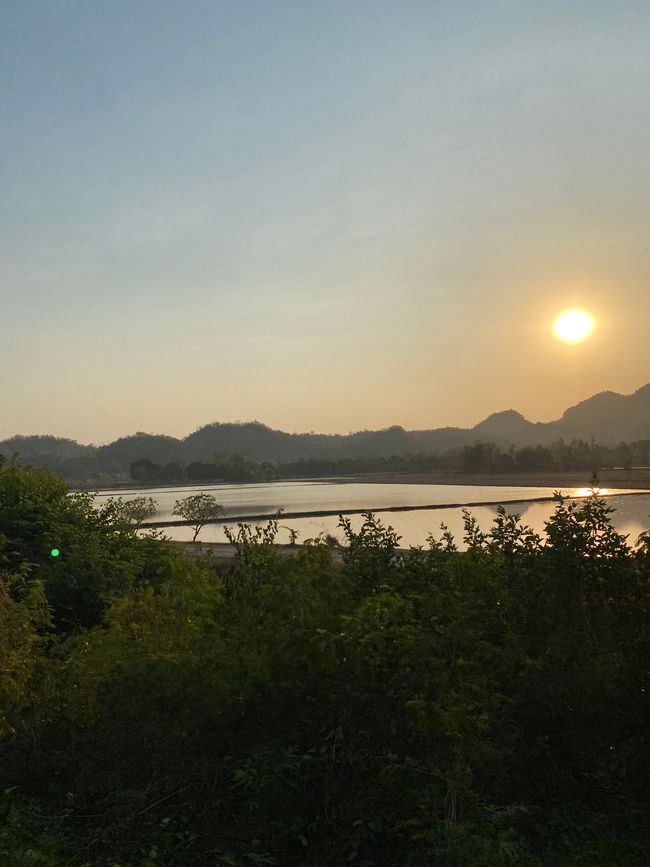
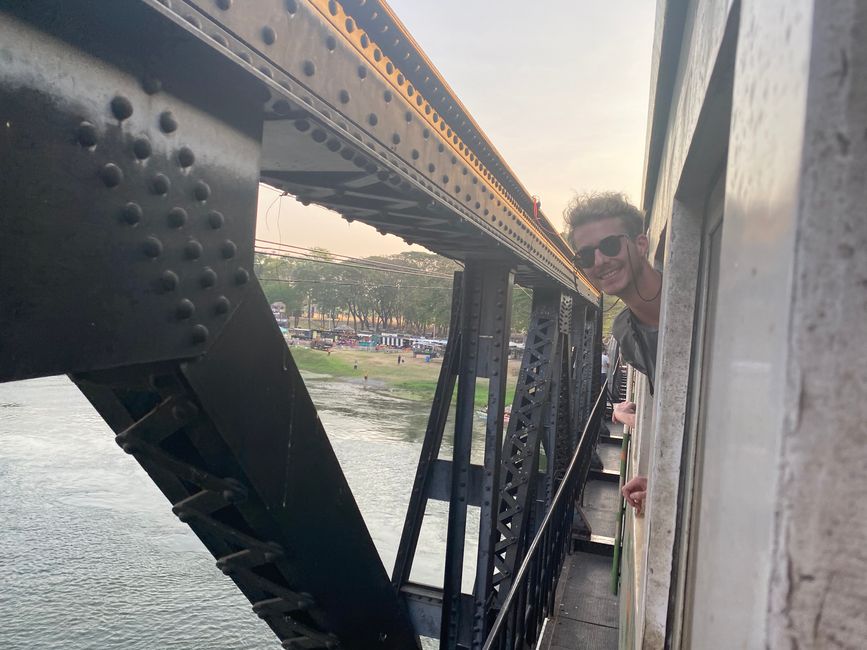
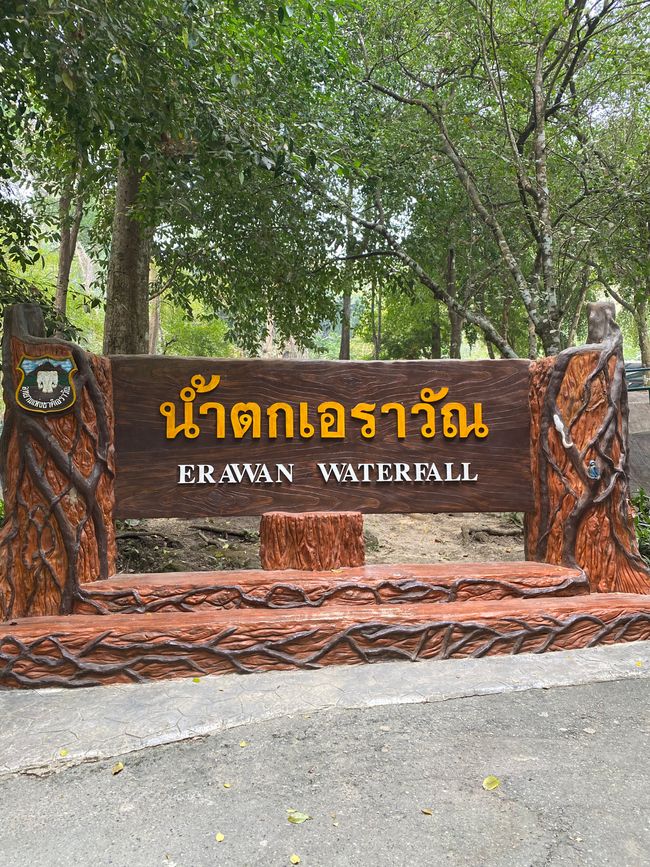
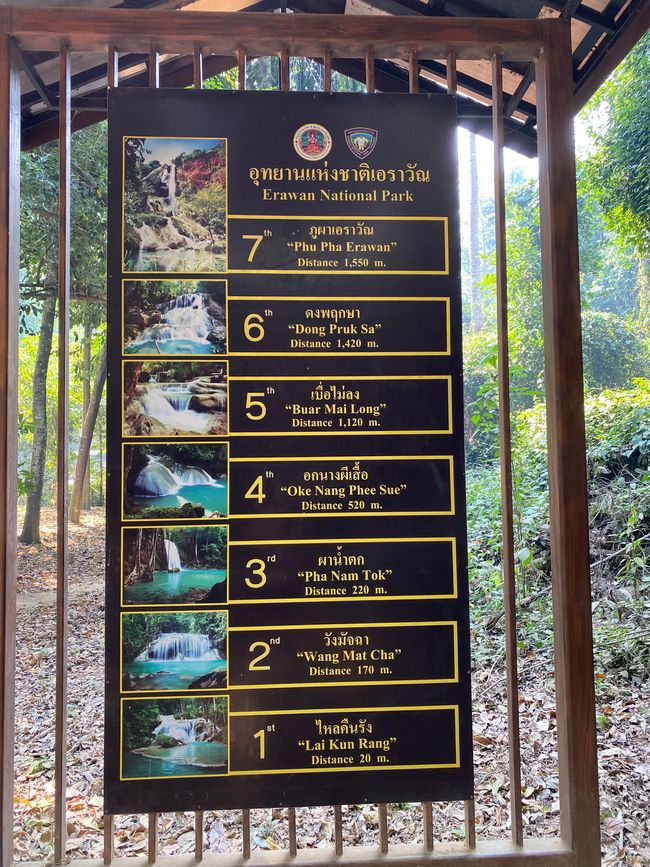
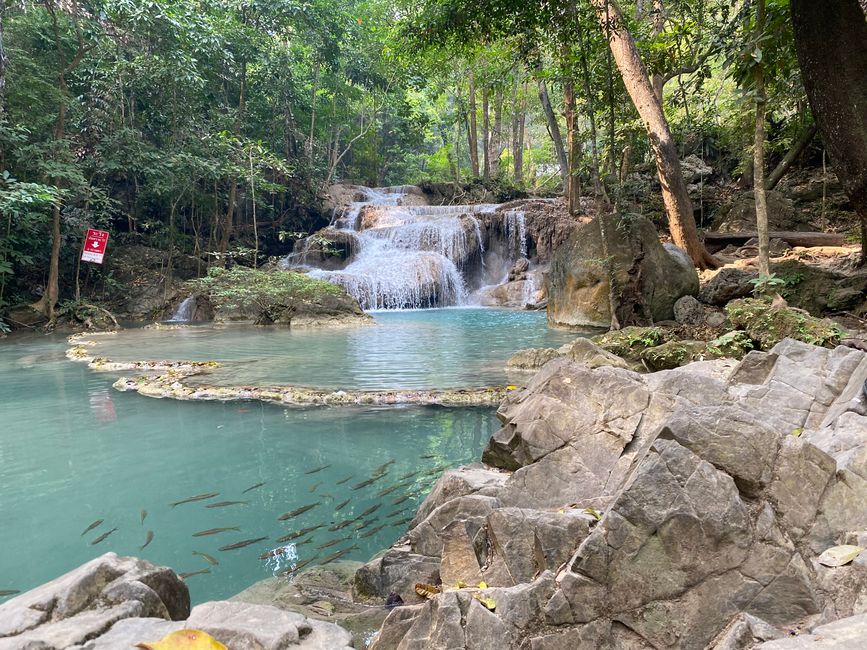
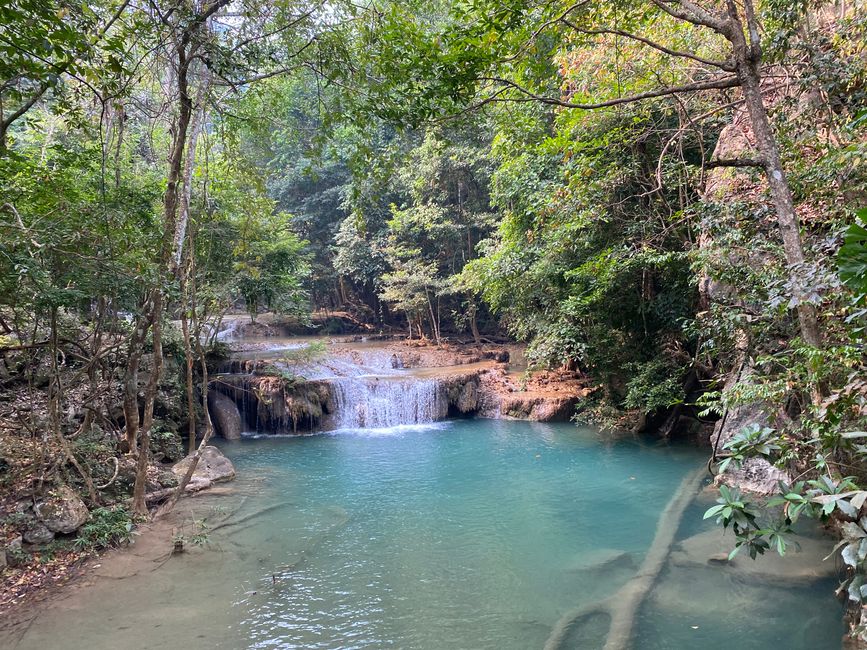
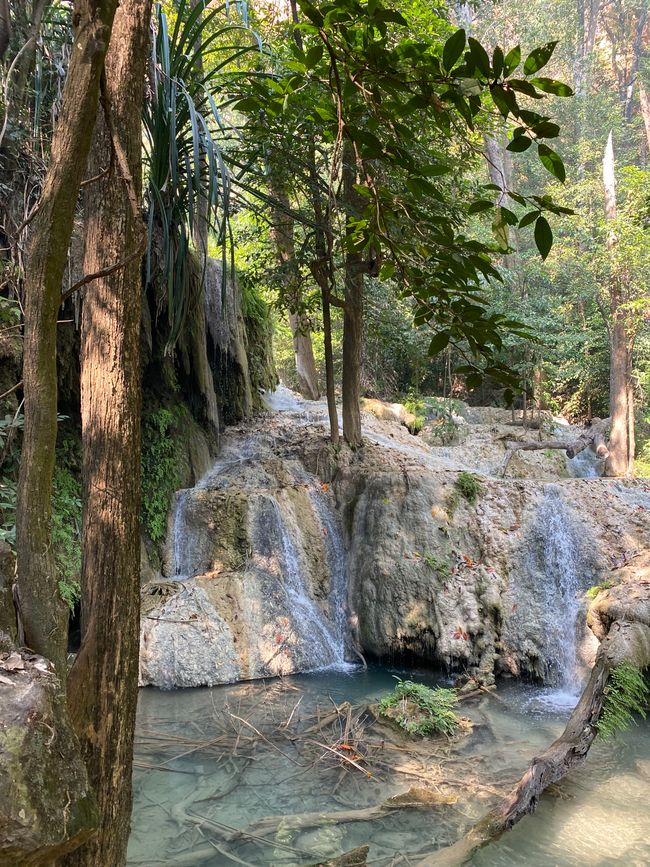
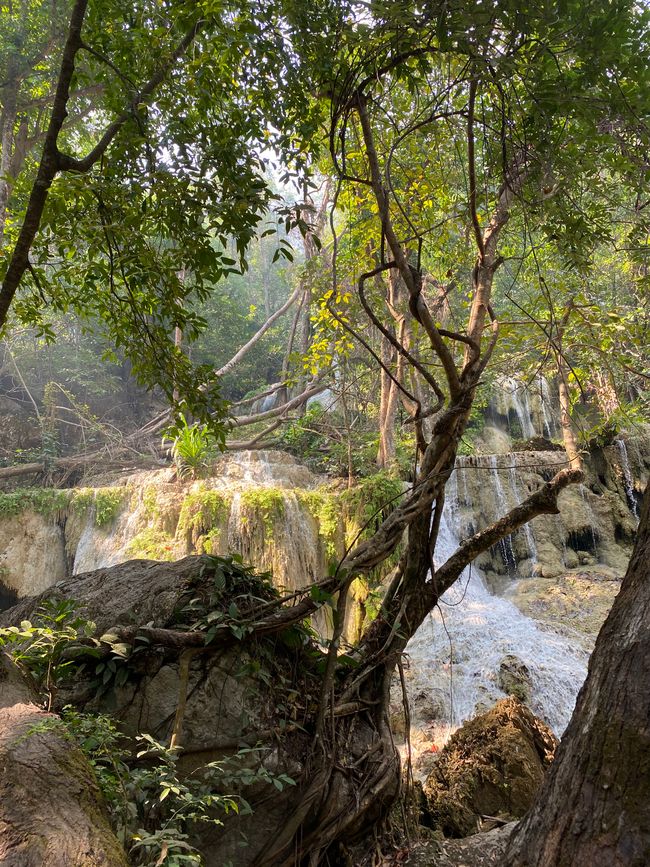
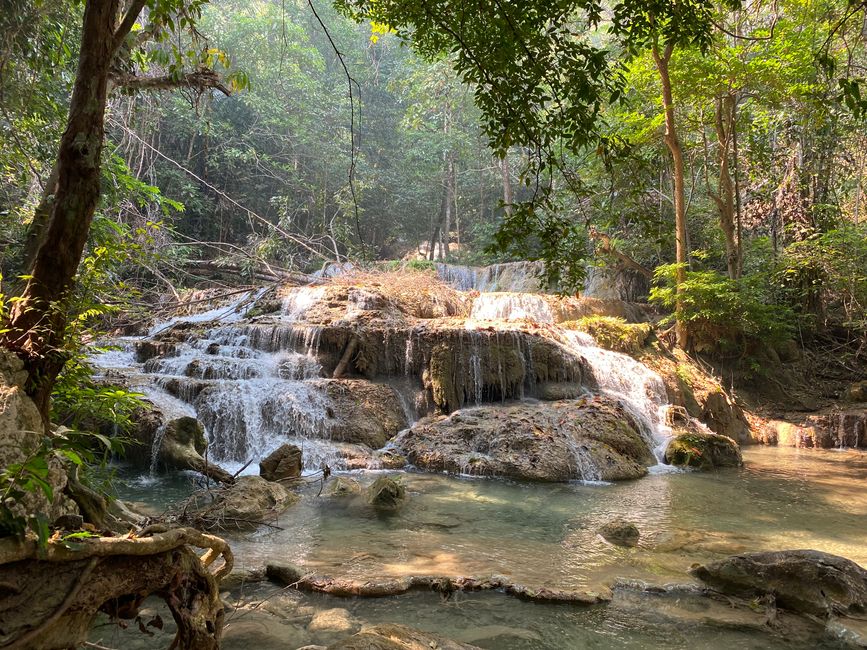
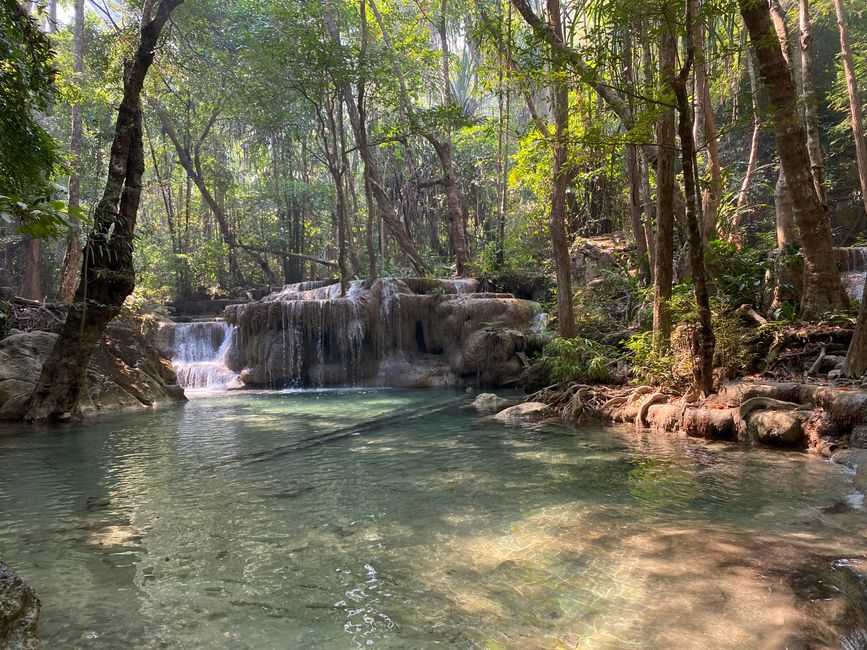
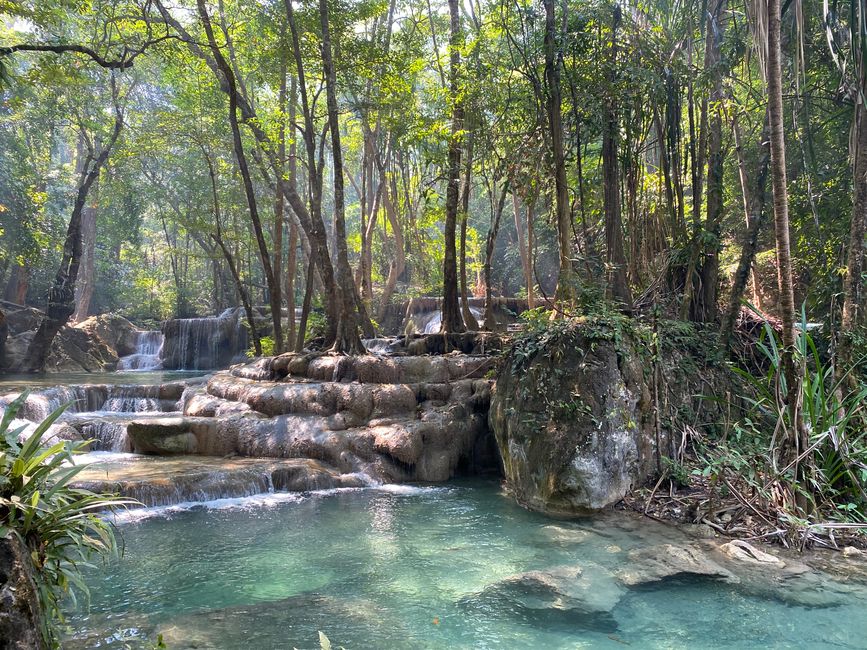
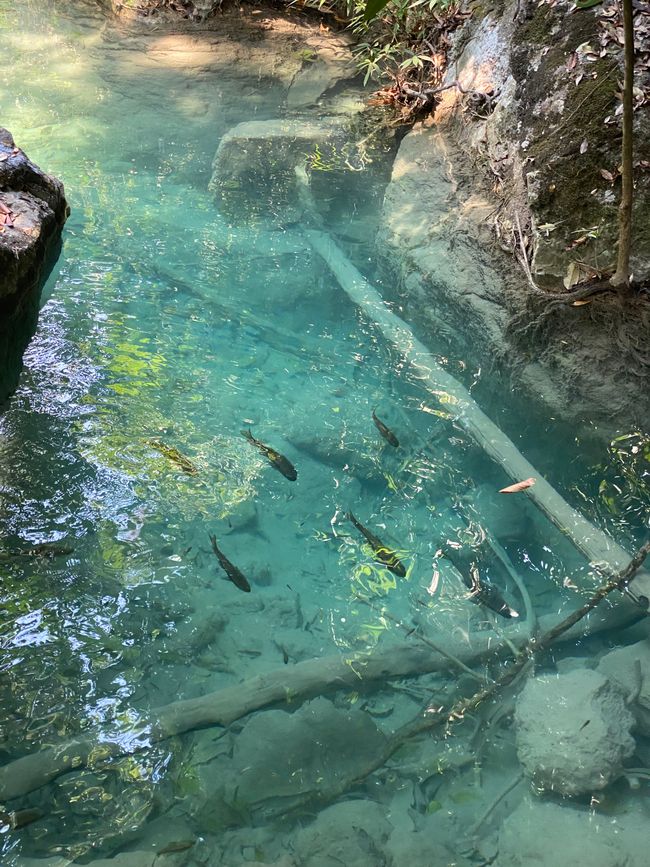
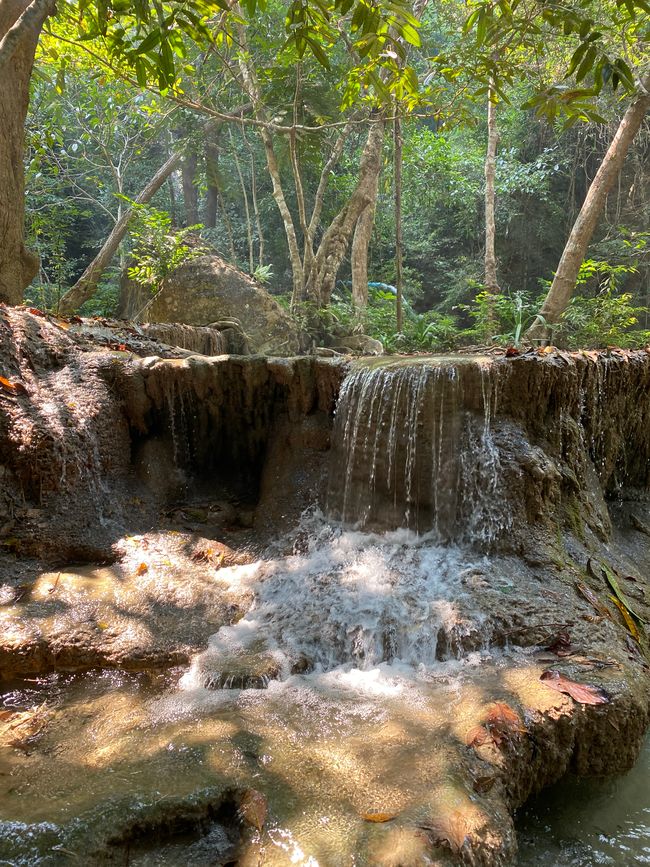
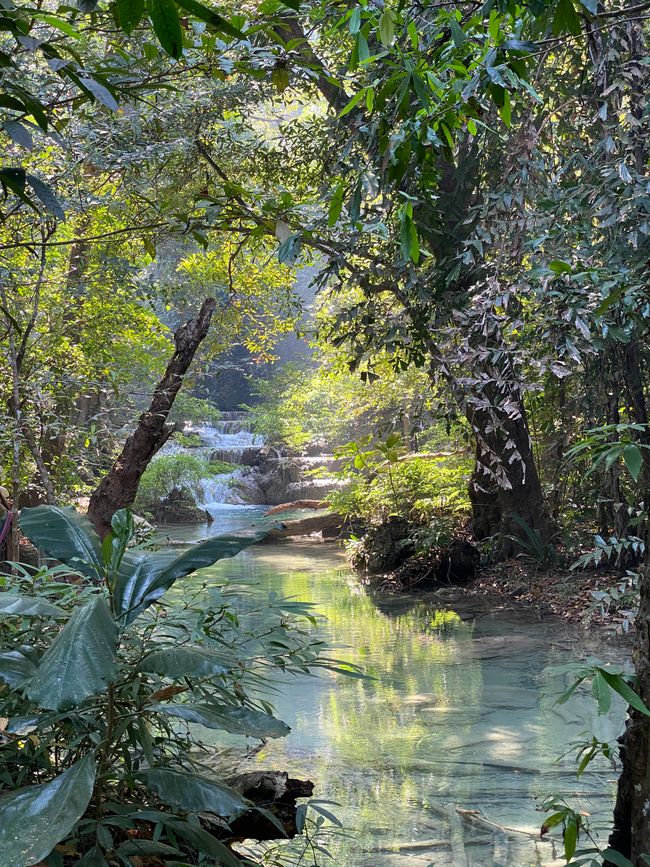
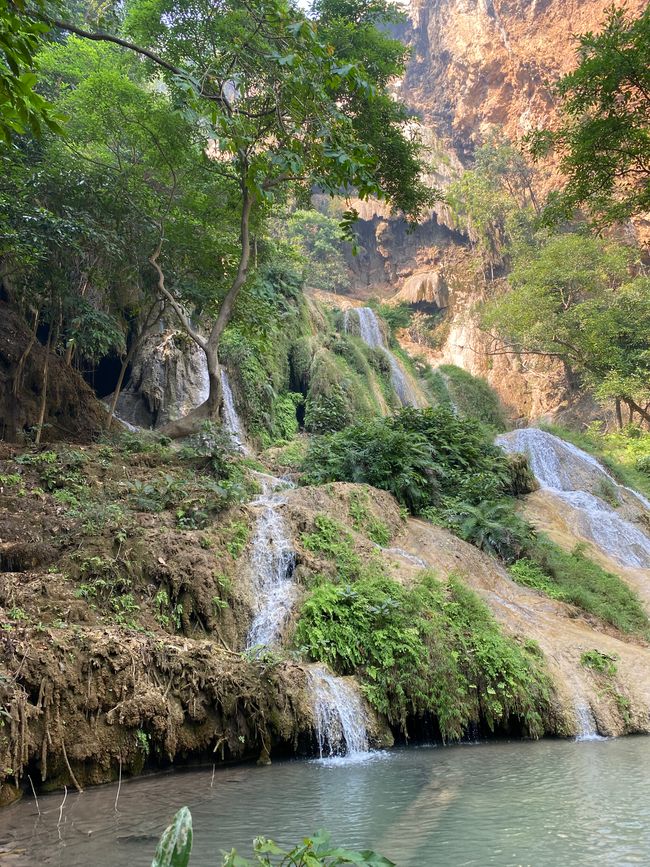
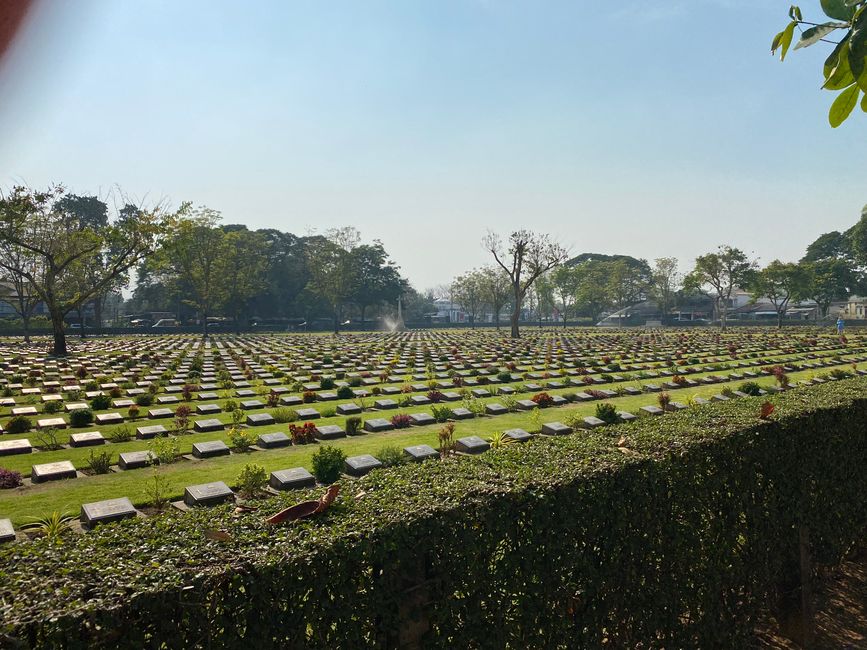
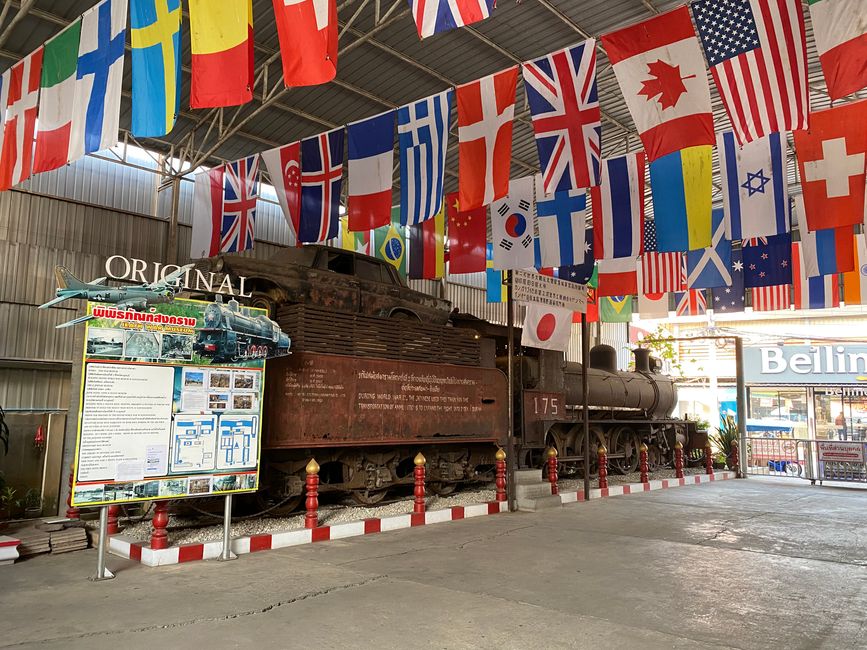
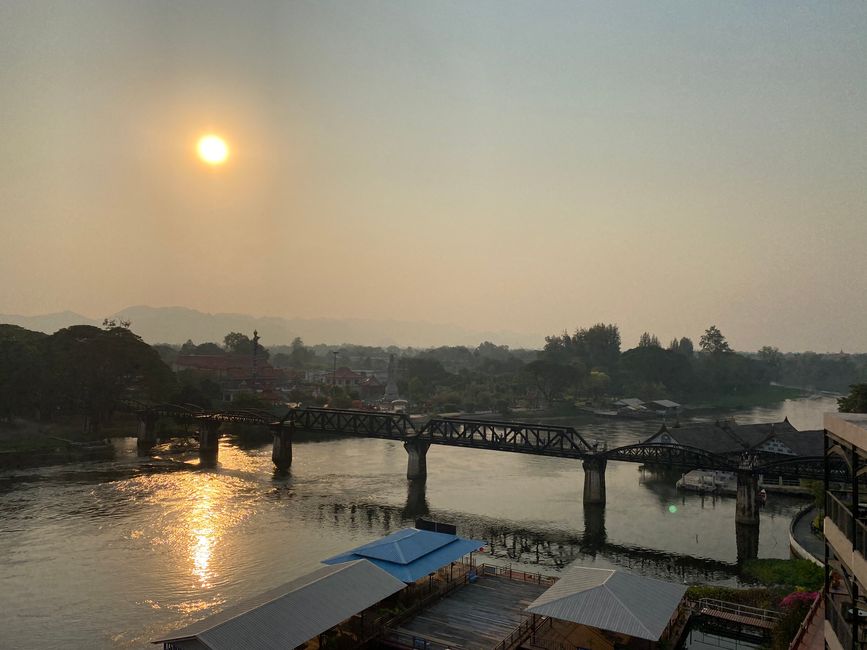
নিউজলেটার সদস্যতা
The last stop on my journey through Southeast Asia took me to Kanchanaburi, a small town about 130 kilometers northeast of Bangkok. Kanchanaburi gained fame due to the sad history that unfolded here during World War II, but more on that later. First, a few words about the journey. After many bus rides in the past few weeks, I switched back to the train. The train journey took about three hours through the most beautiful landscapes. There is probably no better means of transportation in Thailand than the train. Although the train may not necessarily be faster than the bus, there are no risky overtaking maneuvers, and the landscapes are picturesque, especially when heading north. And the prices are unbeatable.
Many attractions in and around Kanchanaburi are directly related to the construction of a railway line from former Siam (today's Thailand) to Burma (today's Myanmar). During World War II, the Japanese attacked numerous countries in Asia, including Thailand and Myanmar. Japan imprisoned about 60,000 Allied prisoners of war and 200,000 Asians as forced laborers during this time. To ensure the supply for the Japanese troops in Burma, they constructed the Thailand-Burma Railway under the worst conditions. 100,000 to 115,000 people died during the construction of the railway due to overwork, brutal treatment by the guards, lack of medical care, and malnutrition. For this reason, the 415-kilometer-long Thailand-Burma Railway is also called the Death Railway.
There are three significant places where you can still experience the history today. One of them is the Hellfire Pass Memorial Museum, which I visited on the first day of my arrival in Kanchanaburi. The construction of the Thailand-Burma Railway was very difficult along the entire route. The workers had to make their way through the jungle and rocky terrain. At the site where the museum stands today, the construction of the railway was particularly complicated. Here, the forced laborers had to cut a path through the rock using primitive tools. And they had to do it not only during daylight but also at night. Illuminated only by fires, the starving forced laborers had to remove the mountain with hammers, picks, and shovels. This is why it is called the Hellfire Pass, as the comparison with the hellfire could not have been more fitting. After learning about the history in the museum, I walked to the Hellfire Pass. Despite the merciless temperatures at this place and the view of the rocks, one cannot begin to imagine the suffering the workers must have endured during the construction of the railway. In addition to the Hellfire Pass, you can also walk along a four-kilometer section of the former railway on the premises, where only individual wooden sleepers remind one of the course of the tracks. I naturally took the train back from the Hellfire Pass to Kanchanaburi. And although the name of the railway line (Death Railway) does not sound inviting at all, it is probably one of the most beautiful routes I have ever seen. Among other things, the train passes the Tham Krasae Bridge, which is impressively built on a slope while the Khwae Noi River flows in the valley. Shortly before arriving in Kanchanaburi, you cross another bridge, the "Bridge on the River Kwai," which is also known from the film of the same name from 1957.
The next morning, I visited a sight that had nothing to do with the events surrounding World War II for a change. The Erawan Waterfalls are among the most beautiful waterfalls in all of Thailand. Although I have seen quite a few waterfalls in the past few months, I couldn't miss this one. So, on the morning of the second day, I took a 1.5-hour local bus ride to Erewan National Park. Unlike the other waterfalls, which could only be reached through longer jungle hikes, it is quite easy here. There are seven waterfalls in the entire area that are connected by a 1.5 km walking trail. To avoid the tourist crowds, I first walked to the seventh and highest waterfall. Unfortunately, due to the dry season, the water level was relatively low, so there wasn't much to see there. For this reason, I decided to walk back to the lower waterfalls and find a comfortable place by the water. Since swimming was only allowed with a life jacket, I decided against going for a swim and just let my feet dangle in the water. As the number of tourists increased significantly and because I wanted to walk around Kanchanaburi a bit more, I took the bus back in the early afternoon. Upon arrival, I went straight to the large military cemetery. About 6,900 soldiers who lost their lives during the construction of the Death Railway are buried here. Finally, I also visited the JEATH War Museum, which also deals with the events surrounding World War II. By the way, the letters JEATH are supposed to represent the warring parties Japan, England, America, Australia, and the Netherlands. In the evening, the host mom cooked for me and the other backpackers, the perfect end to the short trip to Kanchanaburi. The next morning, I took the train back to Bangkok at 7 a.m.
And that was my time in Southeast Asia. In the past four months, I have seen an incredible amount of this beautiful part of the world and have five visited countries, over 40 accommodations, thousands of memories and photos, and a lot of gratitude in my luggage. Thank you Vietnam, Cambodia, Thailand, Malaysia, and Singapore for the wonderful time! I'm sure we will meet again. But my journey is not over yet, it continues to Australia, the destination with which my entire travel planning for 2020 began. I am sure that many surprises, beautiful places, and great experiences await me there.
নিউজলেটার সদস্যতা
উত্তর (3)
Esther
Danke für die vielen schönen Bilder, die ausführlichen Berichte und die Zeitreise in die Vergangenheit. Viele deiner Ziele haben wir auch schon besucht und beim Lesen kamen viele alte Erinnerungen hoch.👍 In den Erawan Wasserfällen hab' ich damals meine Kamera versenkt🙈Florian
Hey Esther, sehr gerne :) Dann ist es dir dort ja ähnlich gegangen, wie mir in der Halong Bay mit der GoPro. Hast du deine Kamera wenigstens wiederbekommen? Esther
Die ist ins Wasser gefallen und lag gefühlt eine Ewigkeit in 20-30 cm Wassertiefe. Tatsächlich ist nichts passiert, alles war noch funktionstüchtig. Sogar dem Film ☝️, es war natürlich noch eine Analogcamera, ist nichts passiert.
LG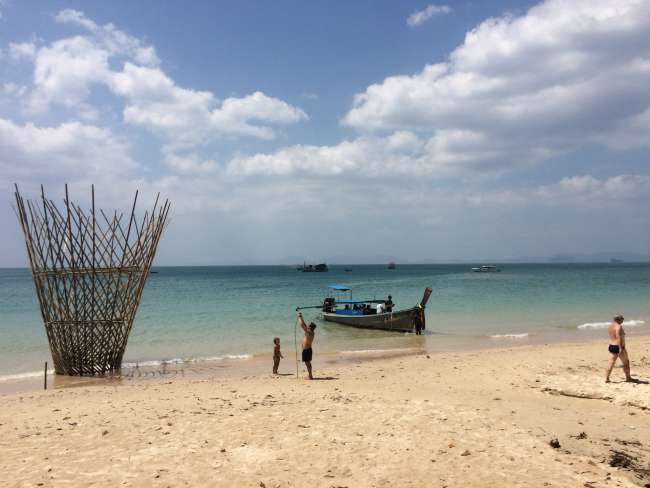
ভ্রমণ রিপোর্ট থাইল্যান্ড
